#Museum of osteology
Text
Quick study!
I visited the Museum of Osteology on the weekend after my 21st birthday. So far i’ve doodled only 6 out of the One Million Billion photos i took, but i hope to do more

i’ve gotten pictures of plenty of non-mammals that i hope to study as well
#zoology#animal study#skull study#Museum of osteology#osteology#animal skeleton#bones mcgee#animal bones#skeleton study#sketches
77 notes
·
View notes
Text

35 notes
·
View notes
Text
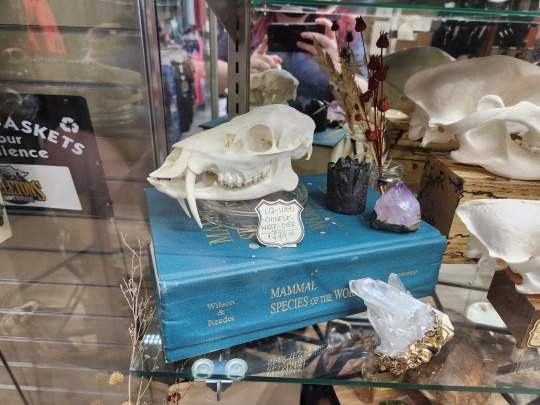
osteology museum taunting me in the gift shop with a holy grail specimen when I just used all my saved up fun money at the taxidermy con last week :')
#taxidermy#museum of osteology#vulture culture#the only ones I ever see available have to be imported and I don't wanna tangle with that can o worms
19 notes
·
View notes
Text
Michigan, Lakes, Books, and Jets
We’ve been busy traveling around, selling my book “Obscure Felicity”, working on getting the sequel published, skydiving (not me, John), socializing with friends along the way, and seeing the sites. Granted, that is no excuse for not doing a post in a few months so we have some catching up to do.
After visiting with relatives in New Jersey and taking care of a few housekeeping things, we headed to Michigan. Just like we explored Tennessee because we had never really spent much time there other than for work, we wanted to explore Michigan, especially the Upper Peninsula. There were many beautiful weather days and places definitely worth mentioning. Bell Isle is a 982-acre island park in Detroit and was interesting to explore. You could see the city across the water and take a ride around the island where they have a Conservatory, Aquarium, Museum and a Nature Center. The Henry Ford Museum in Dearborn is a must see and we were not disappointed. The museum collection contains a huge amount of historical exhibits making it the largest indoor-outdoor museum complex in the US.
We stayed at a nice campground in Holland, MI known for…you guessed it, their tulips. The campground was memorable for a couple of reasons, the first being that I sold 3 books there. The young woman who checked us in bought one and then came back later with 2 friends who also wanted a signed copy. Later, I was remarking that for once there wasn’t a train nearby since every campground we went to seemed to have a train with a loud whistle, running way too often. Just as I said it, a very loud train whistle went off close by causing us to laugh. I really wasn’t looking to manifest a train with a loud whistle, but just goes to show you. We did get to visit Dutch Island Gardens that had a 250 year old windmill that you could climb up and cultivated grounds you could walk through.
From there we enjoyed Frederick Meijer Gardens and Sculpture Park in Grand Rapids. The gardens were laid out nicely and the sculptures were interesting. The area was quite large and we spent the entire day going through it. Next was Sleeping Bear Dunes National Lake Shore, and that I have to say was impressive. I kind of laughed when I heard the locals talk about going to the beach, only to see it as a small stretch of rocky sand along the lake shore. Growing up an hour from the Atlantic Ocean I knew beaches as ocean beaches, and the lake shores were not as impressive to me. But, the Sleeping Bear Dunes were immense and very impressive. The national park also has beaches, forests and inland lakes. We were told the dunes were sculpted by the advance and retreat of huge glaciers over the last two million years. Its the world’s largest collection of freshwater sand dunes and some that rise up to 400 feet above the surface of the lake. There were people climbing all over the steep one that has an overlook that gives a panoramic view of the area. There is also a sign that says if you climb down the dune to the water and can’t get back up, it will cost $3000 to have them come and bring you back up!
Traverse City was the next memorable stop. It is known as the “Cherry Capital of the World” and yes, we sampled lots of cherries. While sitting in a cafe eating cherry pie we glanced out the window to see some small acrobatic planes doing maneuvers over the water. We decided to check it out and as we were approaching the shoreline we were met by the rumbling sound of The Blue Angels overhead! We had no idea they were going to be putting on an airshow over the lake that day and we just happened to walk right into it. It was wonderful and they performed for quite a while. This was made even more fun by serendipity at its best. After the show we looked around for a place to buy some cherries to bring with us and came upon a farmer’s market where you could pick your own. I never picked cherries before and it was a new experience to be out in the orchard with the beautiful fruit laden trees. I picked a few pounds of them, ate cherries for several days, and still didn’t get tired of them.
For our time in St. Ignace we stayed in a quaint campground literally across the road from Lake Michigan. We had a view of the lake and it was just a short walk to their little beach area. John did some running every morning on roads where he barely saw any cars. We were also within sight of The Mackinac Bridge, a suspension bridge that spans the straits of Mackinac and connects the Upper and Lower peninsulas of Michigan. It’s the 4th longest suspension bridge in the world, and has a total span of about 5 miles. In the small town there is an old lighthouse and its also where you can take the ferry to Mackinac Island. The ferry takes about 20 minutes and drops you off in the crowded, touristy area where there are many shops and lots of people. There are no cars allowed, so you will see the streets crowded with people on bicycles, intermingled with the horse-drawn carriages that are quite popular. Once out of the main street area there is a lot to explore and if you’re ambitious you can hike in the state park, kayak and even golf. We chose to walk around the island where we saw Fort Mackinac, the Butterfly Garden and other sites. Once up over the hill where the fort is located, we walked further about a 1/2 mile through a beautiful forested area to their famous Arch Rock that towers above the water and is more than 50 feet wide. We had a good time there on a beautiful weather day, and on the way back to the ferry I gave in and bought some of their tasty fudge from one of the many shops where they make it on the premises.
Pictured Rocks National Lakeshore hugs the south shore of Lake Superior in the Upper Peninsula (town of Munising). The small boat cruise took us through an area of dramatic multicolored Pictured Rocks cliffs. The colors were stunning and we delighted in picking out all the faces and other images we could see in the formations. From the water we had excellent views and the captain gave us some interesting commentary.
Looking for more to explore we decided to take the Soo Locks Boat Tour out of Sault Ste. Marie. The educational boat tour took us through the locks while highlighting stories of historic Sault Ste. Marie. We met 3 women seated in front of us on the upper deck and towards the end of the tour learned they were friends traveling together on a bus tour. It was mentioned that I recently published a book and all 3 of them wanted to purchase a signed copy. They say things happen in 3’s and I was happy to oblige.
We moved on through Iowa where John got to do one skydive at Des Moines Skydivers. I finalized more of what I needed to do to get my 2nd book published and we squeezed in a visit to a Botanical Garden that we forgot we had already visited some months back. Maquoketa Caves State Park near Dubuque was full of caves and rock formations in an area we climbed down into and hiked through. It was a bit of a workout for me, but a walk in the park for John. In Omaha, Nebraska we drove through Lee Simmons Wildlife Safari Park, making several stops to take photos. Henry Doorly’s Zoo and Aquarium in Omaha is worth a mention as well. The layout was somewhat different and they had a really interesting bird aviary featuring birds you don’t often see. In Oklahoma City we stopped at a fascinating museum dedicated to bones, called SKELETON'S Museum of Osteology. Most of the skeletons were real and covered just about any living thing with a skeleton.
In between visiting all of these places we stopped in Kansas to visit our friends John and Alice who are really good people and an inspiration to be around. We also were able to meet up with our skydiver friend Serena and her dog Rex. We’re fortunate to have friendships with many amazing people that we can meet up with all over the country. Another great thing about our travels these last several months is how many books I’ve sold. John is an excellent marketer and talks about “Obscure Felicity” to anyone he feels might be interested. The joy I get out of someone being excited to get a signed copy of my book is beyond rewarding. In just about every campground, and many of the places we visited, people bought my book. I’ve gotten so much positive feedback and several are asking when the sequel is coming out. Soon!
We are now slowly making the last legs of our journey back to Arizona for my 2nd foot surgery I have scheduled for early October. Things will be slowing down for sure as we’re more stationary, but I know there will be further exciting stuff to tell, so stay tuned.
For all the photos see John and Charlotte’s flickr sites. Just click on either of our names.
#Michigan#world tour#Blue Angels#Traverse City#UP#Upper Pennisula#Museum of Osteology#Oklahoma City#Arizona#Obscure Felicity#Kansas Hicks#Omaha#Nebraska#Kansas#Summerfest#Skydive Chicago#Maquoketa Caves State Park#Dubuque#Iowa#Henry Doorly's Zoo and Aquarium#Lee Simmons Wildlife Safari Park#Soo Locks Boat Tour#Mackinac Bridge#New Jersey#Cherry Capital of the World#cherries#Sault Ste. Marie#Pictured Rocks National Lakeshore#Lake Superior#Arch Rock
0 notes
Text
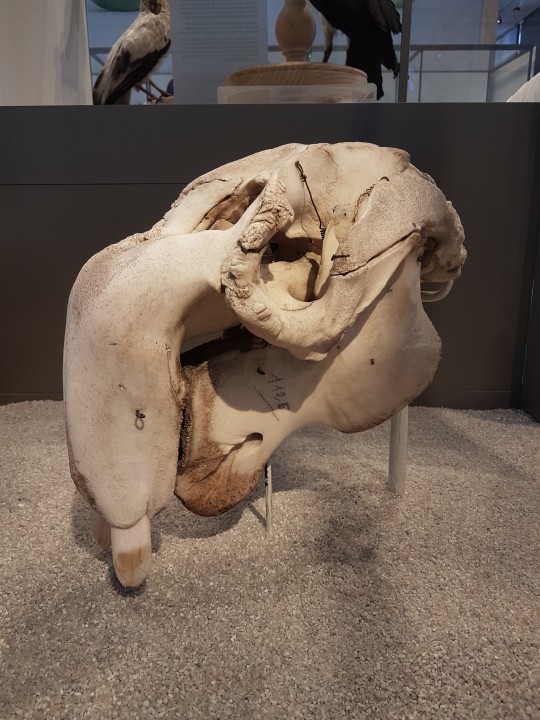
Dugongs skull
34 notes
·
View notes
Text
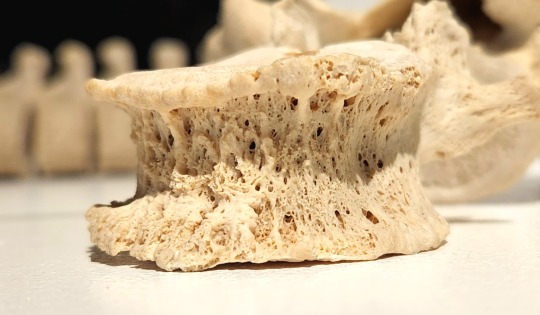
View inside a bone
Human Body Museum
Panama City Beach, Florida
#studyblr#osteology#osteology pictures#human body museum#museums#museum#bones#osteo#medblr#biology#bio#human biology#human bio
12 notes
·
View notes
Text

#my artwork#digital arwork#my art#procreate#digital art#procreate art#photo study#digital painting#painting#bat#osteology museum
5 notes
·
View notes
Photo
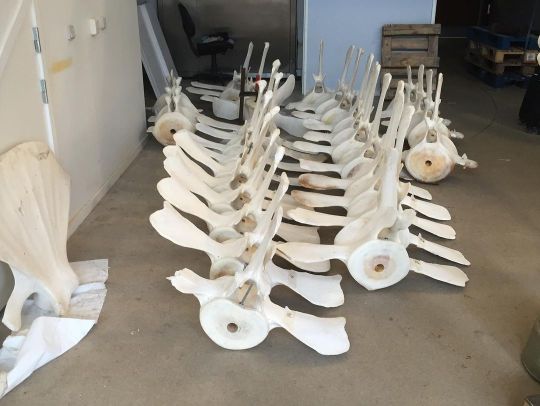
Building Whale skeleton in Copenhagen. #taxidermy #osteology #skeleton #whale #whalebone #copenhagen #museum @copenhagen (at Copenhagen) https://www.instagram.com/p/Cpd1uRGKbPc/?igshid=NGJjMDIxMWI=
12 notes
·
View notes
Photo

Diamondback rattlesnake skeleton by Vaukalaka https://flic.kr/p/a4qGrK
5 notes
·
View notes
Photo

The Natural History Museum tour is an outstanding day of science and fun activity for all family members. Housing a staggering 70 million items, there are five main collections: Botany, Entomology, Mineralogy, Palaeontology and Zoology. The Museum is renowned for its exhibition of dinosaur skeletons in a particularly large gallery of Dinosaurs, including a spectacular Diplodocus and Tyrannosaurus (T-Rex). Find the answers to such questions as who lived when and where, who were predators and prey and what happened to them. Start your tour with Blue Zone proceeding through the Dinosaur Gallery to the fish, amphibians and reptiles before heading to Human biology with images of nature and mammals. You will be able to take a photograph of blue whale model and then see specimens of marine invertebrates. Give a break in the cafe, then proceed to Green Zone where Creepy Crawlies, Fossil Marine Reptiles, Fossils from Britain and birds are. Then head to Red Zone through the Earth sculpture via an escalator for magnificent Volcanoes and Earthquakes, Restless Surface galleries. One floor up, visit Minerals, Treasures, The Vault and the oldest tree in the world, Grand Sequoia. Visit Darwin Centre, you can enjoy the excellent Wildlife Garden which is now being transformed into an urban garden. Natural History Museum is London’s day treat. Don’t miss that. You never know unless you visit it! 👉 Tourope.co.uk #naturalhistory #nature #taxidermy #paleontology #fossils #museum #oddities #fossil #science #vultureculture #naturalhistorymuseum #curiosities #cabinetofcuriosities #wunderkammer #skull #dinosaur #osteology #prehistoric #wildlife #geology #dinosaurs #skeleton #skulls #bones #taxidermyart #curiosity #skullcollection #naturalhistoryillustration #entomology (at Natural History Museum, London) https://www.instagram.com/p/ClSFG5PIOer/?igshid=NGJjMDIxMWI=
#naturalhistory#nature#taxidermy#paleontology#fossils#museum#oddities#fossil#science#vultureculture#naturalhistorymuseum#curiosities#cabinetofcuriosities#wunderkammer#skull#dinosaur#osteology#prehistoric#wildlife#geology#dinosaurs#skeleton#skulls#bones#taxidermyart#curiosity#skullcollection#naturalhistoryillustration#entomology
2 notes
·
View notes
Text
So I’m going to highlight something I’m not sure people who like skeletons and curiosities think about often:
the human skeletal remains you see for sale in oddities shops were invariably grave-robbed.
I worked with human remains in an academic research context in the US for more than a decade. One of the first things I tried to teach my students was respect for the remains in our collections, not only because they were people, deserving of dignity in their death, but also because most of the skeletal remains in academic teaching collections were not donated voluntarily. In most cases, we have no idea exactly where they came from or to whom they belonged.
Historically, there has been a huge international trade in human skeletal remains for teaching medical students. The trade reached its peak in the 19th Century and continued for much of the 20th, and while ostensibly the practice was banned in India in 1985, it does still exist illegally. In the US and Europe, most of the remains in teaching collections were sourced from India through bone traders. Bone traders were (are) lower caste people charged with disposing of human remains—often by cremation, but also by interring in graves—but instead of doing so, sold the remains on to medical schools in the US/Europe through the intermediary of anatomical and medical supply companies. These anatomical specimens are the remains of people who were, unknowingly and without consent of their loved ones, denied their humanity in death to satisfy the appetite of the West for anatomical specimens, despite the remains of their own people being considered largely sacrosanct.
Which leads me to my next point: this practice originated under British Colonialism in India. I hope I don’t need to draw this point out, but objectification of these remains by medical students and researchers is a furtherance of the Western colonial project and othering of people of colour. As medical students, we’re trained to divorce ourselves emotionally from the remains we learn from in the name of professionalism. Medicine can often be confronting, and it serves patients and doctors alike to be able to continue working calmly and objectively in the face of those challenges. But in a world where empires and scientific disciplines have been (and continue to be) built on a legacy of scientific racism and dehumanisation, it behooves us to consider exactly how those teaching specimens were acquired—and how they came to be for sale.
Any human skeleton or human bones you see for sale in oddity stores are invariably retired teaching specimens, or were otherwise originally purchased through an anatomical specimen supply company that leveraged bone traders for acquiring their wares. In other words, those remains were grave-robbed, or stolen from funeral pyres and morgues. It is vanishingly unlikely that they are remains of known, ethically-sourced provenance like informed donation. If they were, they would not have been relinquished to the general public to be sold for profit. There would be contractual obligations that dictate how those remains would be managed once they need to be retired from teaching/decommissioned.
Please keep this in mind when you see human remains for sale in oddity shops. Buy plastic or ceramic teaching models instead. Don’t unwittingly continue creating a market for stolen human remains.
#personal#if you’re wondering what should be done with the remains if we can’t teach with them the answer is inter and memorialise them#universities and medical schools need to make a concerted effort to shift their reliance on these remains towards intentionally constructed#teaching collections of known and ethical provenance#this is a hugely expensive time-consuming and complicated enterprise#but to be honest I’m not sure I like what it says about most institutions that theyd want to do it on the cheap#I also did a lot of work back in the day in repatriation of indigenous remains in museum contexts and I will tell you:#if the institution can’t tell you where they came from or to whom the remains belonged#they likely aren’t there voluntarily#medicine#human skeleton#anatomical specimens#oddities#scientific racism#Calcutta bone trade#osteology#anatomy#anatomical study
0 notes
Text



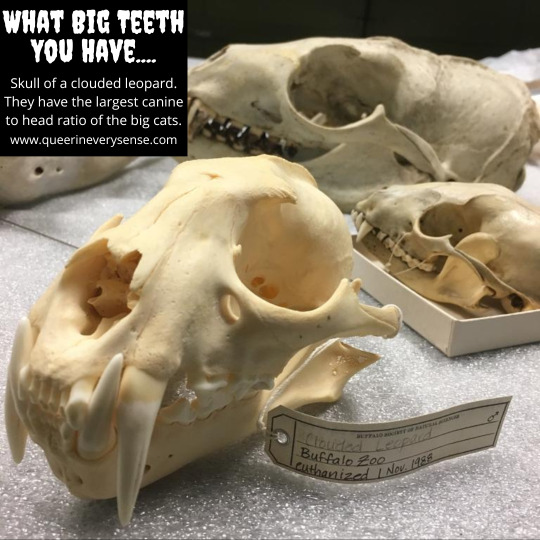


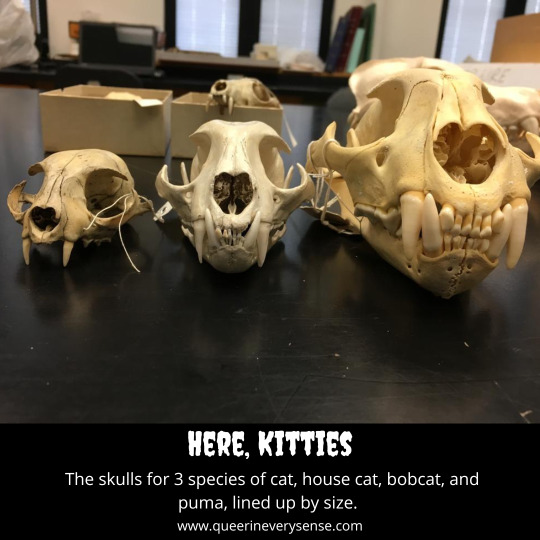

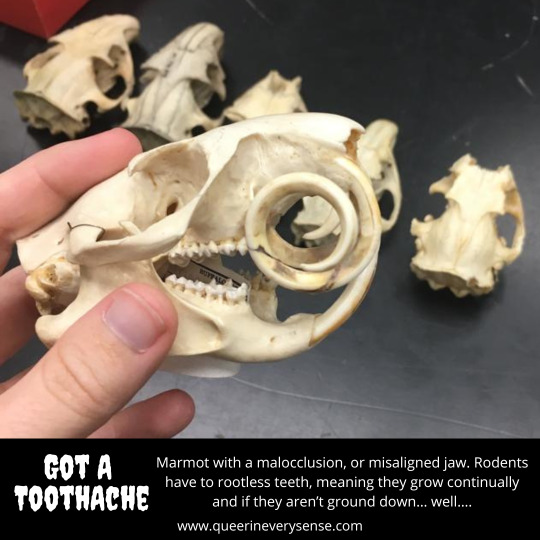
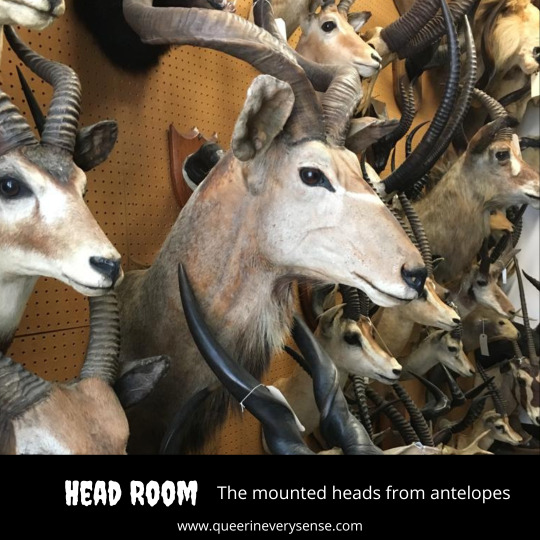
💀 New Life After Death 👻
🏛️ I’ve loved the natural world for as long as I can remember. And while it is sad to work with dead animals, each specimen gets to live on, becoming immortal through the museum.
🦉 The goal of preservation is to make something that can withstand the test of time. When we open the drawers full of birds, there are specimens from the 1920s that are the prettiest bird in the bunch. So these hundred-year-old specimens live on to show us a snapshot of their world. It’s a little like time traveling. From the data associated with it, we can know where an animal was living, what it was eating, how old it was, how it died and often much more. These creatures, once thought to be gone forever, are reborn in our understanding, offering glimpses into the past that inform our present.
🧬 These specimens get to live on and answer questions we humans don’t even know to ask yet. Natural history museums have been collecting objects and specimens since the 17th century. In the 1950’s, the people collecting small mammals in the Philippines had no idea that in 50 years their specimens could be used in DNA studies. This is a testament to the afterlife of these animals in the world of science. They continue to play a role, even in a new era. As our understanding and technology evolves, these preserved beings will be resurrected once again, offering fresh insights and knowledge to future generations.
👩🔬 Collection workers like me are stewards of these specimens, making sure they can tell their stories for as long as possible. In a way, we are the guardians of this cycle of life, death, and rebirth in the realm of natural history. These creatures find a form of immortality, transcending death by becoming timeless messengers of the natural world. Their stories continue to unfold, and their contributions to our understanding of life on Earth are bound to endure, even as we peer into the mysteries of existence, both in this world and, perhaps, the next.
-Abbey 🦕🐝🍄
#MuseumCollection#BehindTheScenes#Bones#BoneCollector#SkeletonCollection#AnimalSkeletons#NaturalHistory#Osteology#Taxidermy#Zoology#Career#Nature#Curiosity#Oddities#Gothic#Halloween#spooky#skeletons#skulls#museum#museums#learning#teaching#specimen prep#life#death#rebirth#natural history#queerineverysense
1 note
·
View note
Text

did I mention how Mom hung the ornaments on the last-minute tree, because ngl I think it's brilliant lmao
#we get an ornament each per year so I got the logo ornament with the rhino and this giraffe one#museum of osteology#christmas tree#also by last minute I mean she went out at 9pm on the 24th and bought this skinny lil thing and it's actually quite nice#since she swapped out the LEDs for these much more warm and not-painful lights
5 notes
·
View notes
Text
Human Osteology manuals are like: give us 100€ for a book or buy the ones from the 19th century for 20€ with incorrect info we refuse to edit
#i have Tim White's Human Osteology Manual printed#but its binded in a way that the pages will be ripped most likely#book the fucking book is too expensive for me!!!#i have a bunch of manuals in pdf#but printing and binding them is also fucking expensive#and my eyes are not good for reading a screen#ignoreme.jpg#that book has been to hell and back tbh#i carried it to the museum a lot and i think there are still little bits of bone in some pages
1 note
·
View note
Text
Museum Of Human Osteology
Real Human Skulls, Skeletons, & Bones. Genuine antique human skulls. These skulls typically come from private collectors, medical professionals, and institutions.
Museum Of Human Osteology
0 notes
Text
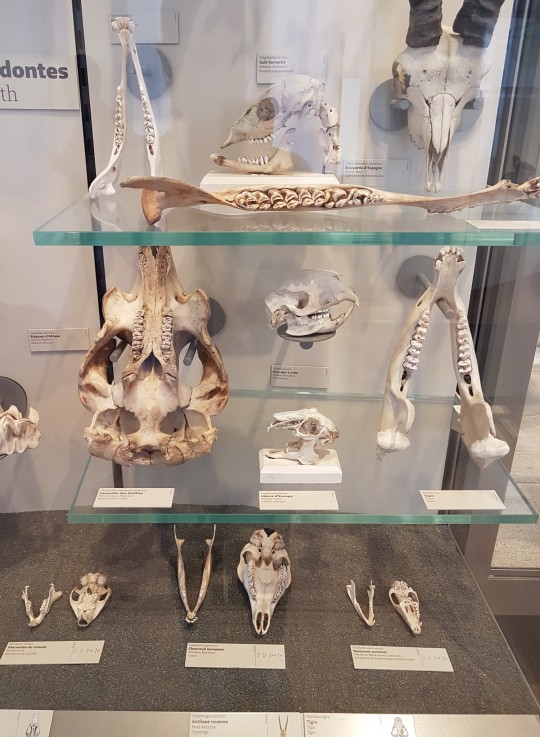
A case of skulls focusing on dentition



At the Museum of science and nature in Bordeaux
47 notes
·
View notes